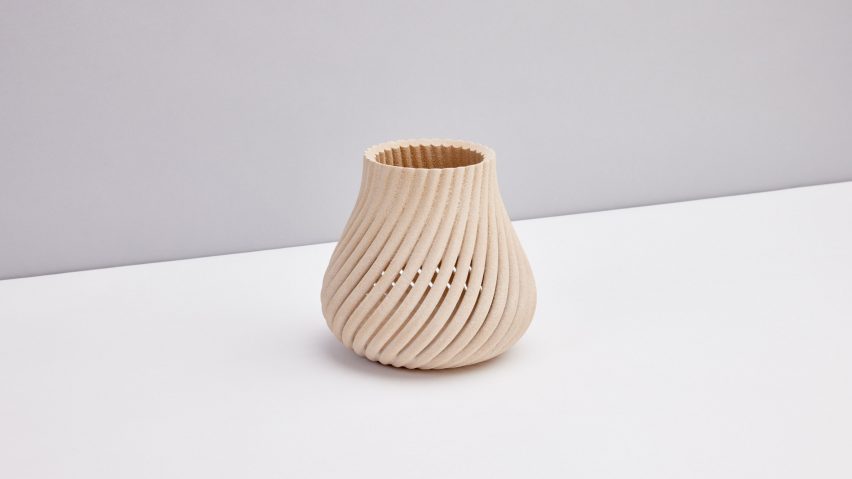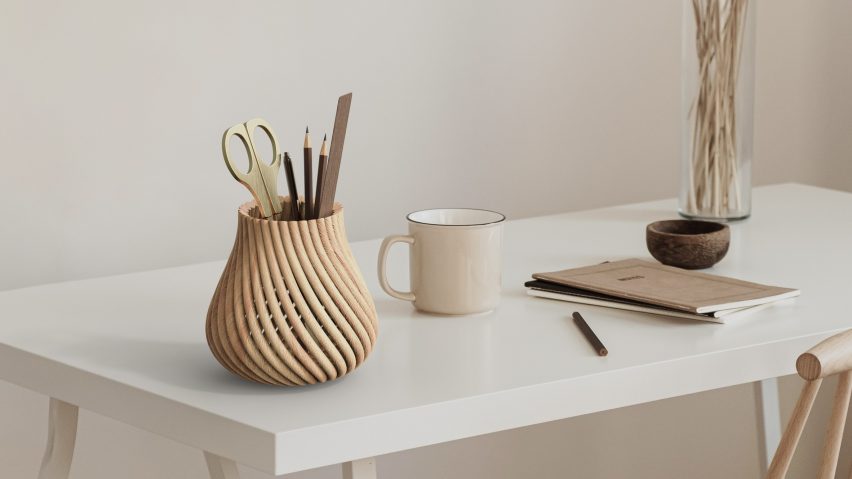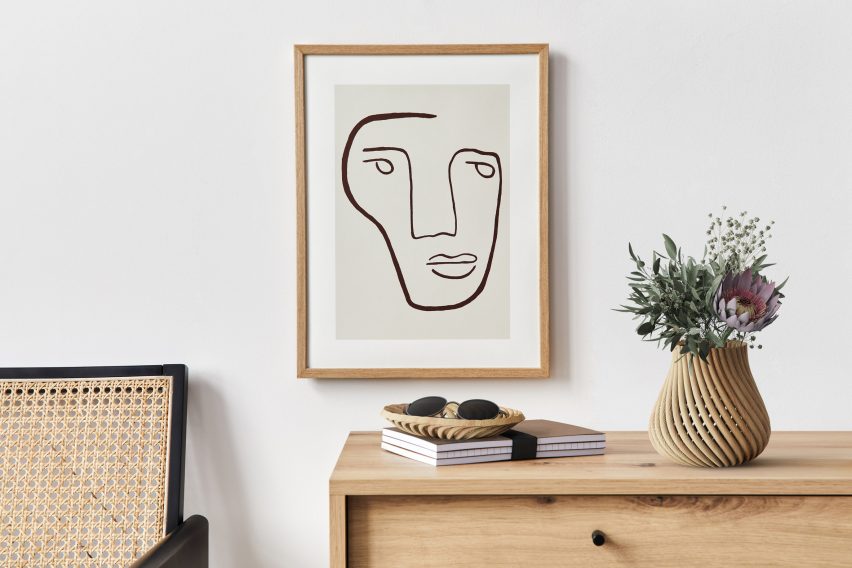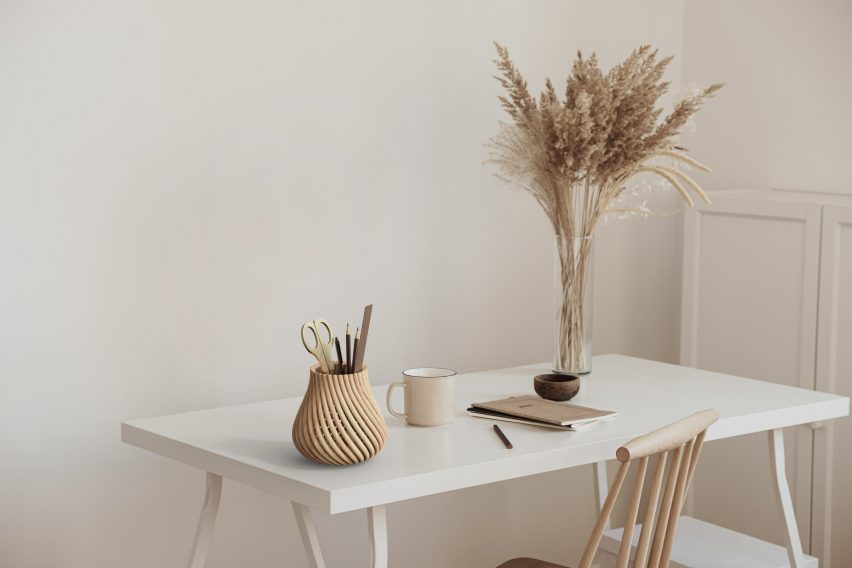
Yves Béhar 3D prints Forust homeware from reclaimed wood waste
Sawdust is mixed with a natural tree-sap binder and 3D printed into complex, swirling geometries to form this homeware collection, designed by Yves Béhar for additive manufacturing company Forust.
Called Vine, the range includes a vessel, bowl, basket and tray, created using a process that Forust says is the "first of its kind" for rematerialising offcuts from the wood and paper industry.
The sawdust composite is 3D printed in layers to replicate different wood grains and achieve a strength and durability that the company claims is comparable to conventional timber.

"I see this material as a fantastic circular design opportunity to build unique products with additive technology, rather than subtractive," Béhar told Dezeen.
"This will result in fewer trees needing to be cut and waste material being put to good use."
Of the 15 billion trees that are felled every year to produce paper, build homes and make furniture, Béhar claims up to 50 per cent goes to waste.
That's because subtractive practices like turning tree logs into lumber boards leave behind unusable cellulose dust, of which only a portion is recovered to make particle board or wood pellets. The remainder is sent to landfill or incinerated, contributing to air pollution.

Forust diverts this sawdust from going to waste and turns it back into a useable product by spreading the sawdust into thin layers and binding them using a "non-toxic and biodegradable" binder.
This is made by mixing tree sap with lignin – a polymer found in wood and other plants, which helps to bind their cell fibres and is another waste byproduct that accrues in the timber industry.
"Our process leverages high-speed binder jetting to selectively deposit binder or ink onto each layer of sawdust at a rate of over 670 million drops per second and a resolution of 1600 dots per inch," said Forust CEO Andrew Jeffery.
The 3D-printing software can incorporate wood stains such as oak, ash and walnut, as well as digitally reproduce most grains from rosewood to mahogany.
Unlike particle board or laminate, the resulting wood composite can be sanded and refinished like real wood.
The Vine collection in particular is printed from cylindrical rods of the same length and diameter, which spiral out from a central extrusion point at the base to create a simple, repeated pattern.

Rather than making the products resemble conventional woodwork, this helps to emphasise the unique rhythm of the 3D-printing process.
"Because Forust's printers produce parts additively, layer by layer without the need for support, it provides the freedom to create complex geometries and intricate designs that would be difficult or impossible to produce with traditional woodworking methods," the designer explained.

Béhar predicts that the same method could be used to produce anything from furniture to entire architectural elements.
"I am currently exploring vanities, counters and storage being made with this process, as well as furniture that could be produced at the time of order rather than months in advance like standard production," he said.
"I also see a big opportunity in customisation and sizing, as variations can be easily done for each order. As a designer, it is rare to be offered a realistic and sustainable new material to create with and I can't stop sketching new ideas."
Other projects that have repurposed wood industry waste include a modular furniture collection by Swedish designer Martin Thübeck that combines reclaimed wood from a local birch sawmill using a single joint.
Last year, Formafantasma dedicated an entire exhibition at London's Serpentine Sackler Gallery to the global impact of the forestry industry.
Called Cambio, the show examined how the extraction, production and distribution of wood is not always as sustainable as it seems.